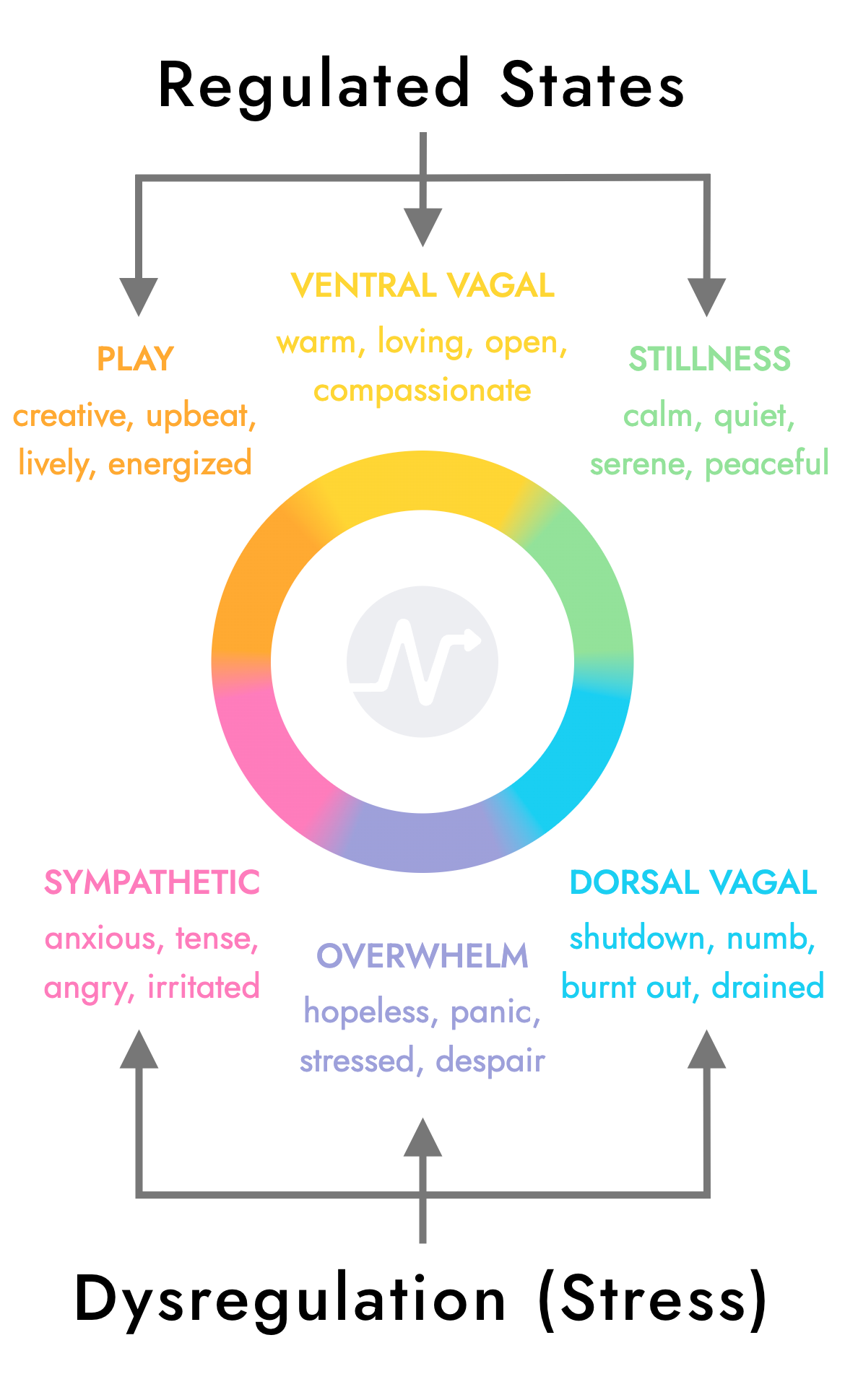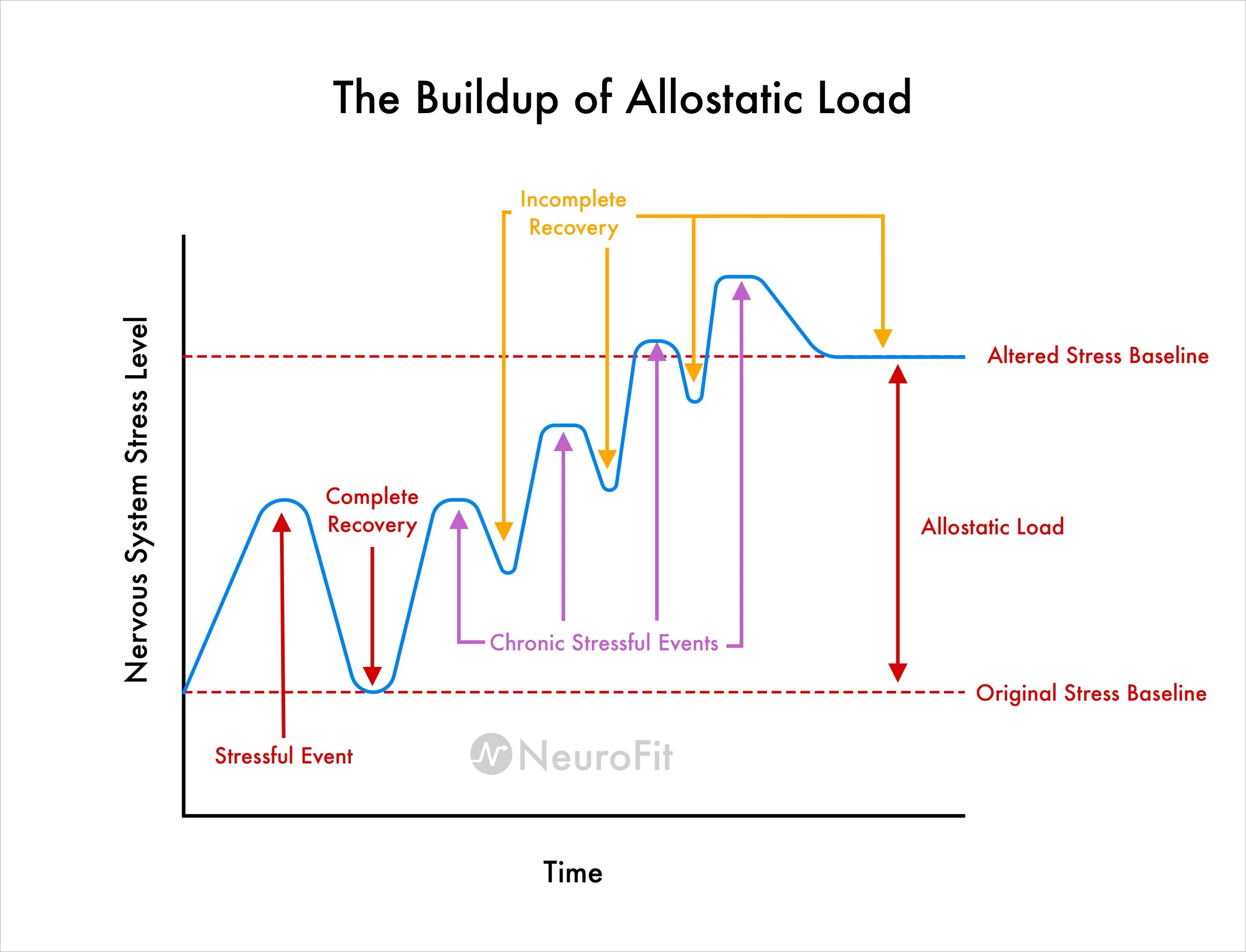Trauma and The Nervous System: What is Your Body Holding Onto?
The effects of trauma run deep, altering the very physiology of our nervous system.
When working through the complexities of trauma, it is vital to address it from a full-bodied and holistic approach in order to achieve true peace and healing. This means understanding how trauma presents in the body, learning how to recognize symptoms of stress and trauma, and finding the most effective tools to overcome it.
In this article, we’ll explore the intricate connection between trauma and the nervous system and offer some real-time solutions for how to release trauma from the body.
The connection Between Trauma and The Nervous System
The nervous system is designed to keep us safe and is constantly working to protect us from potential threats or harm. It is a complex network that dictates how we think, feel, and experience the world around us. When we experience trauma, whether it's physical, emotional, or psychological, our nervous system immediately jumps into action, shifting into a fight, flight, or freeze response.
What is Trauma?
Trauma is an emotional response to an intensely stressful event or experience. Trauma can be due to a single occurrence or be prolonged over a period of time and affects the body on a physiological level.
Trauma and The Nervous System
Trauma can be described as a “shock” to the nervous system, often leading to a feeling of detachment or disconnection from the body. Our nervous system is often working on auto-pilot after experiencing trauma, dealing with extreme amounts of stress that we are not yet able to process on an emotional level.
Our bodies have a “somatic memory” that replays physical sensations, reactions, and symptoms of trauma and because of this, it is on high alert at all times. This is when nervous system dysregulation occurs which is a condition in which the body's stress response becomes constantly activated, even in the absence of a stressful situation and long after a stressful or perceived threat has passed.
After an extended period of time, this prolonged activation often eventuates as burnout: a condition in which the body is unable to cope with further stress due to mental, physical and/or emotional exhaustion.
SOURCE: NEUROFIT
The Nervous System’s Response to Trauma
Because of this somatic memory, the nervous system will often become triggered by stressful situations that resemble a traumatic experience. Trauma causes us to enter an intense emotional state and imprints deeply into our subconscious mind. This is why even things like sounds or smells can trigger an emotional reaction. Perhaps a certain song or phrase brings up uncomfortable feelings and sensations in your body.
When we are triggered by something externally that matches those same feelings and sensations of what we experienced during a trauma, our nervous system prepares to fight, flight, or freeze. This is because the nervous system does not differentiate between what’s real and not real, it only understands how we feel. This is also why learning how to communicate safety through somatic tools and techniques plays such a crucial role in healing from trauma.
How Trauma Manifests in The Body
Trauma can be very subtle in nature and show up gradually over time. Especially when it comes to emotional or psychological trauma, we may not realize its full effects until much later down the road. Even when we experience a physical trauma, such as an injury from a car accident, the shock to the nervous system can delay symptoms.
Signs of Trauma in the Body
Trauma manifests in many different ways and while it is a deeply personalized and individual experience, there are some shared signs and symptoms that can play out in the nervous system.
Here are some of the more common trauma responses that you may want to look out for:
Anxiety and Panic Attacks – Persistent feelings of anxiety or experiencing panic attacks can indicate unresolved trauma.
Hypervigilance – Constantly being on edge or overly alert as if expecting something bad to happen.
Insomnia or Sleep Issues – Difficulty falling or staying asleep, or experiencing nightmares.
Physical Symptoms – Muscle tension, unexplained chronic pain, gastrointestinal issues, or chronic fatigue.
Emotional Dysregulation – Difficulty in managing emotions, sudden mood swings or intense emotional reactions.
Any or all of these symptoms have an immense impact on our overall well-being. Trauma affects our mental health, our ability to relax and recover from stress, and how we respond to the world around us. Ultimately, if you want to be able to experience life to the fullest and truly foster a sense of peace and safety within your mind and body, you will need to find a way to release the effects of trauma.
Lasting Effects of Trauma
When trauma is not addressed properly, the body begins a painful cycle of revisiting it. Trauma shows up in the way we interact with others, how worthy we feel of love and support from others. Trauma can dictate the level of self-care we provide for ourselves and the extent to which we can care for others.
The lasting effects or trauma take a major toll on our mental and emotional health, but as we’ve pointed out, it can lead to a number of health related issues physically as well. The longer it goes untreated, the more familiar your body becomes with stress and this alters your baseline stress level.
When stress becomes more prolonged, it builds up in the nervous system (this is called Allostatic Load). As the nervous system holds onto more and more stress, it becomes less flexible, and more prone to moving into fight or flight or shutdown responses.
SOURCE: NEUROFIT
How to Release Trauma From The Body
By now, you hopefully understand how deeply trauma can imbed itself into the body. The stress and recurring side effects of trauma require an approach that addresses trauma from the root cause which is, the state of the nervous system.
So how do you begin to help your body heal and release trauma in a way that effectively changes the body’s learned responses? By prioritizing nervous system regulation.
Nervous System Regulation for Trauma
Nervous system regulation is what allows us to shift flexibly between different nervous system states in response to internal and external stressors. When we find ourselves being triggered by past traumatic events, knowing how to redirect those emotions in a productive manner is what gives us back our power and control over our life.
Trauma does not need to define us or dictate the entire course of your life. You can choose to write a new story and use that trauma to fuel your goals and sense of purpose. Understanding how your nervous system responds to stress, being able to identify when it is shifting into a dysregulated state, and learning how to come back to balance is key to releasing trauma.
Support Your Nervous System for Healing
Here are a few ways to support your nervous system and tools to use along your healing journey:
1. Somatic Exercises to Release Trauma
Somatic exercises offer a physical release to stress while simultaneously allowing our emotions to come to surface. There are a number of different exercises that you can use to target the recurring emotions of trauma such as shame, guilt, fear, grief, sadness, and anger. Because so many aspects of trauma can be difficult to articulate or put into words, somatic exercises provide a non-verbal way to express and release those stored emotions.
Somatic exercises promote a sense of empowerment and control around an otherwise out-of-control situation. Trauma is a part of everyone’s life. We all have experienced it in one way or another, but we often associate feelings of weakness or shame around what happened. Somatic exercises are a way to proactively combat those feelings and help us to gain a better perspective on what we are able to control, which is our own response and interpretation of the events.
2. Check In With Your Nervous System Daily
Taking a minute or two at the start of your day to assess your nervous system state can help you get a better understanding of how your body manages stress. Inside the NEUROFIT App, you are guided to identify your current nervous system along with what state you are in for each life aspect (i.e. love & relationships, family & friends, environment). This is especially useful because you can track what area your trauma is affecting most and begin to work on clearing it.
3. Get CLEAR on Your Emotional State
That being said, the NEUROFIT App also provides unlimited AI-based wellness coaching that can help you work through the area(s) you feel most dysregulated and identify the underlying emotions behind it. When you feel overstimulated or activated, hop onto the CLEAR feature inside the app and combine it with the suggested somatic exercise to come back to a place of balance.
4. Create an Environment for Healing
The nervous system is designed to respond to our environment. When it comes to the much needed feelings of safety and security within our body in order to heal, you must be vigilant in keeping the right environment around you at all times.
Pay attention to what specific things might be causing you stress, who is supporting your growth, and also where you spend your time. Remember, the nervous system operates from our feelings and sensations. Create an environment that feels good to you.
While we fully understand trauma is complex and can take much effort and additional support to resolve, these few steps can get you well on your way to managing and relieving the stress behind it.
FAQs About Trauma and The nervous system
What is trauma?
Trauma is an emotional response to an intensely stressful event or experience.
How does trauma show up in the body?
Trauma affects the body in numerous ways causing increased anxiety, sleep disturbances, chronic pain and more. It shifts the state of the nervous system into a defensive fight, flight, or freeze response.
How to release trauma from the body?
You can begin releasing the effects of trauma from the body through daily nervous system regulation and somatic release exercises. The NEUROFIT App can be used as your somatic coach for healing and restoring balance in the body and mind.
Conclusion
When not dealt with, trauma can take a devastating toll on the nervous system. By recognizing the signs and symptoms of trauma, you can begin effectively working towards resolving it. Find a sense of peace and stability through regulating your nervous system with tools such as the NEUROFIT App and somatic exercises for trauma and begin your path to greater health and well-being.
To assess the state of your nervous system in just 2 minutes, take this Nervous System Regulation Quiz.





